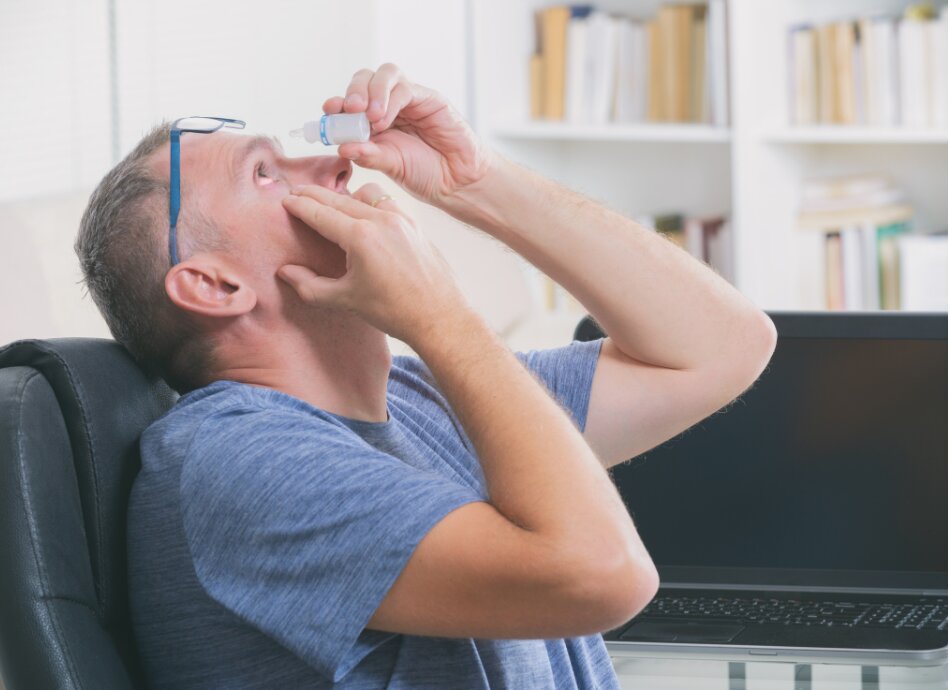Chloramphenicol eye drops and eye ointment
Key points about chloramphenicol eye drops and eye ointment
- Chloramphenicol eye drops and eye ointment are used to protect the eye against bacteria and to treat some types of eye infections.
- Chloramphenicol eye is also called Chlorafast® (eye drops) and Chlorsig® (eye ointment).
- Find out how to apply it safely and possible side effects.

Chloramphenicol eye drops and eye ointment are used to protect the eye or eyelids after surgery (eg, cataract surgery), protect the eye after getting a scratch or injury and to treat some types of eye infections, eg, bacterial conjunctivitis.
Bacterial conjunctivitis is a condition that affects the surface of your eye. The most common symptoms are red eye, feeling you have something ‘gritty’ in your eye and sticky eye (when your eyes are glued together especially in the morning on waking due to a white sticky discharge). Read more about bacterial conjunctivitis. You must see an optometrist or eye specialist to have this correctly diagnosed, especially if you wear contact lenses.
In Aotearoa New Zealand chloramphenicol eye drops and ointment are available on prescription from your optometrist or doctor. The drops can also be bought from your pharmacy without a prescription, after consultation with a pharmacist.
Eye drops: Use 1 drop in the eye(s) every 2–6 hours for 2–3 days, then reduce to 4 times a day. Continue treatment for 48 hours after your eye appears normal.
Note: Just use the drops while you are awake – you don't need to wake yourself during the night to put them in.
Eye ointment: Apply 1.5 cm of ointment inside the lower eyelid 3 times a day. If used together with eye drops, use the eye drops during the day and the ointment once at night. Continue treatment for 2 days after the eye appears normal.
| If your eyes are no better after two days of treatment, you must see your doctor. |
|---|
- If your eyes have a 'crust', gently clean this off with cool clean water before you use chloramphenicol.
- When you first put the eye drops or eye ointment into your eye, they can cause blurred vision. This should quickly clear after applying eye drops but ointments may smear your vision for longer. Make sure you can see clearly before you drive or use machines or tools.
- Take care not to touch your eyelids or surrounding areas with the dropper tip of the bottle or ointment tube.
Read more about how to apply eye drops and how to apply eye ointment.
Contact lenses
Avoid wearing contact lenses while using chloramphenicol.
- If you wear hard or disposable contact lenses, you can start using your lenses again after finishing treatment.
- If you have disposable lenses, use new lenses after finishing treatment.
- If you are wearing soft (non-disposable) contact lenses, wait 24 hours after finishing treatment before starting to use your lenses again.
- Clean your non-disposable lenses well before using again and use a new contact lens case.
- Do you wear contact lenses?
- Are you pregnant or breastfeeding?
If so, it’s important that you tell your doctor or pharmacist before using chloramphenicol. Sometimes a medicine isn’t suitable for a person with certain conditions, or it can only be used with extra care.
- Chloramphenicol is not recommended for children under 2 years of age except under medical advice.
- Don't use it if you are allergic to this medicine.
Chloramphenicol eye drops and eye ointment can sometimes cause mild eye irritation or stinging, but these usually pass within a day or so. If the irritation continues, or if you experience any other eye problems, visit your optometrist, doctor or pharmacist.
Read more about medicines and side effects and reporting a reaction you think might be a side effect.
Resources
How to use eye drops properly(external link)(external link) Safe Medication
5 questions to ask about your medications(external link) Health Quality and Safety Commission, NZ, 2019 English(external link), te reo Māori(external link)
References
- Chloramphenicol (eye)(external link) New Zealand Formulary
Brochures

Medicines and side effects
Healthify He Puna Waiora, NZ, 2024

Health Quality and Safety Commission, NZ, 2019 English, te reo Māori
Credits: Sandra Ponen, Pharmacist, Healthify He Puna Waiora. Healthify is brought to you by Health Navigator Charitable Trust.
Reviewed by: Kenny Wu, Optometrist, Eye Institute, Auckland
Last reviewed:
Page last updated:





